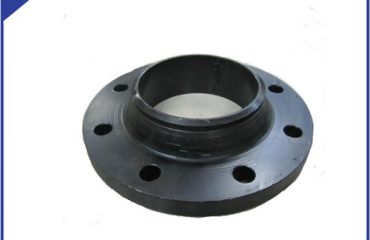The generalized’s forging is a broad concept, which refers to the manufacture of raw materials with tubes, plates and forgings, and the manufacturing methods include the contents of almost all the pipe forming processes. and relates to specific varieties (including socket welding and threaded fittings for all varieties, the so-called ‘ forging ‘ is the corresponding to the English “forged”, that is, the pipe seat and other fittings needing forging forming, such as the thick wall forged tee. The content described here refers to the latter type of forging.
According to the different varieties and requirements of pipe fittings, forged pipe fittings are mainly used in forging, forging and cutting process. In order to reduce the material consumption, the common die forging method has a larger flying edge, which is used to manufacture the forming process without flying edge and has achieved good results. This section mainly introduces the process of die forging, forging and cutting, forming and manufacturing pipe fittings.
1. Die Forging
For socket welding and threaded tee, four-pass, elbow and other small-size pipe fittings, its relatively complex shape, should be used in die forging process manufacturing.
The blanks used in the die forging shall be rolled profiles, such as rods, thick-walled tubes or plates. When the ingot is used as raw material, the ingot should be rolled into a bar or forged before being used as a die-forging billet to eliminate the defects in the segregation and looseness in the ingot.
The billet is heated and forged in the mould (depending on the case, may be after the initial forging and then die-forging, the pressure makes the metal flow and filling the mold cavity, after the die forging blank if there is a flying edge, but also through the process of rushing to fly to finish all the die forging.
2. Forging
For special-shaped fittings or die-forged pipe fittings can be used to make free forging process. The approximate shape of the pipe should be forged, such as the tee, the branch pipe should be forged.
3. Cutting Processing
For some tubular pipe shape, the tube can be shaped by direct cutting of bar or thick wall pipe, such as double socket pipe hoop and movable joint. The fiber flow of metal material should be roughly parallel to the axial direction of the pipe. For three-tee, four-pass, elbow-type pipe fittings can not be used for direct cutting process forming.
we have our own pipe fitting factory since 1998 ,which covers 100 acres. In 1998, we invested and set up a new flange factory. Up to now, we have a complete production system, and become a professional and competitive group in this field.
 Language
Language Espanol
Espanol English
English Italian
Italian عربى
عربى
 Skype: chinamaker99
Skype: chinamaker99  Tel: 86-316-5120812
Tel: 86-316-5120812 Email:
Email:  Whatsapp:
Whatsapp: 